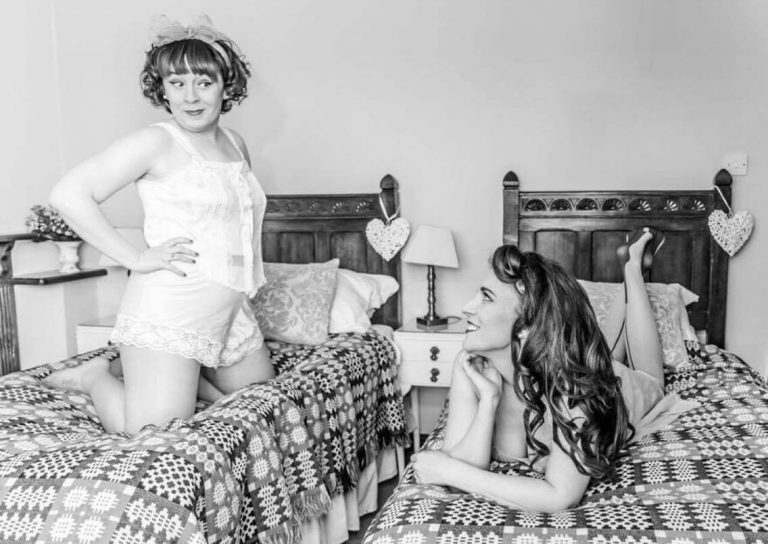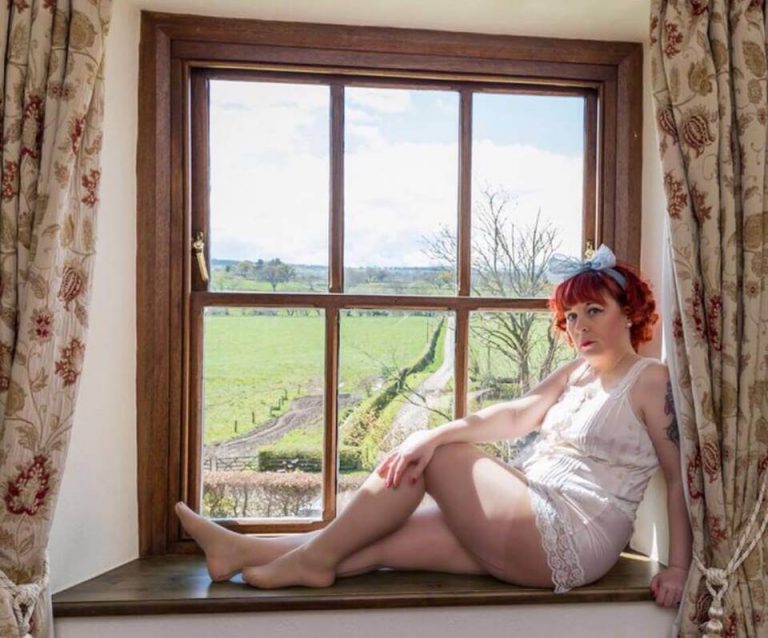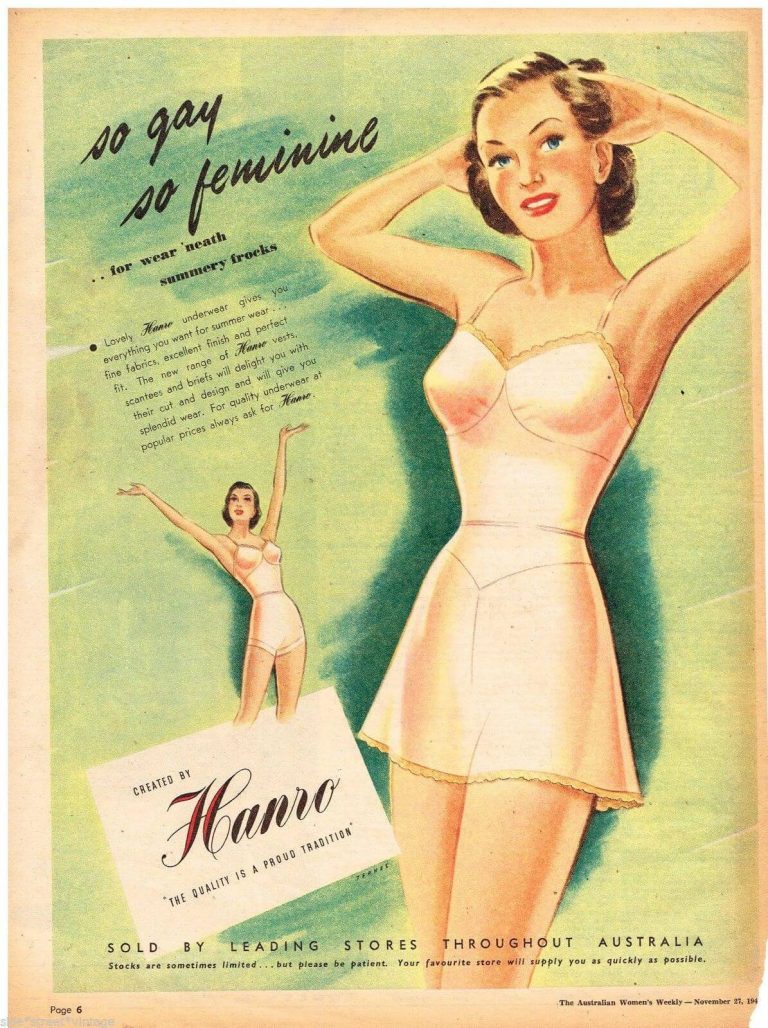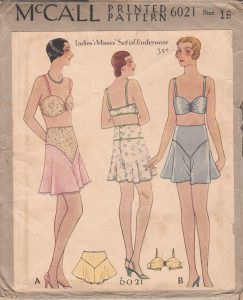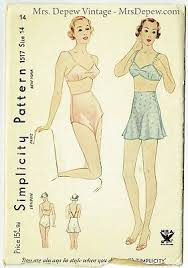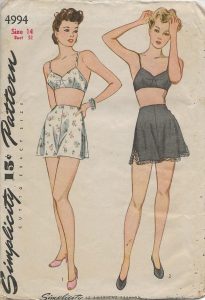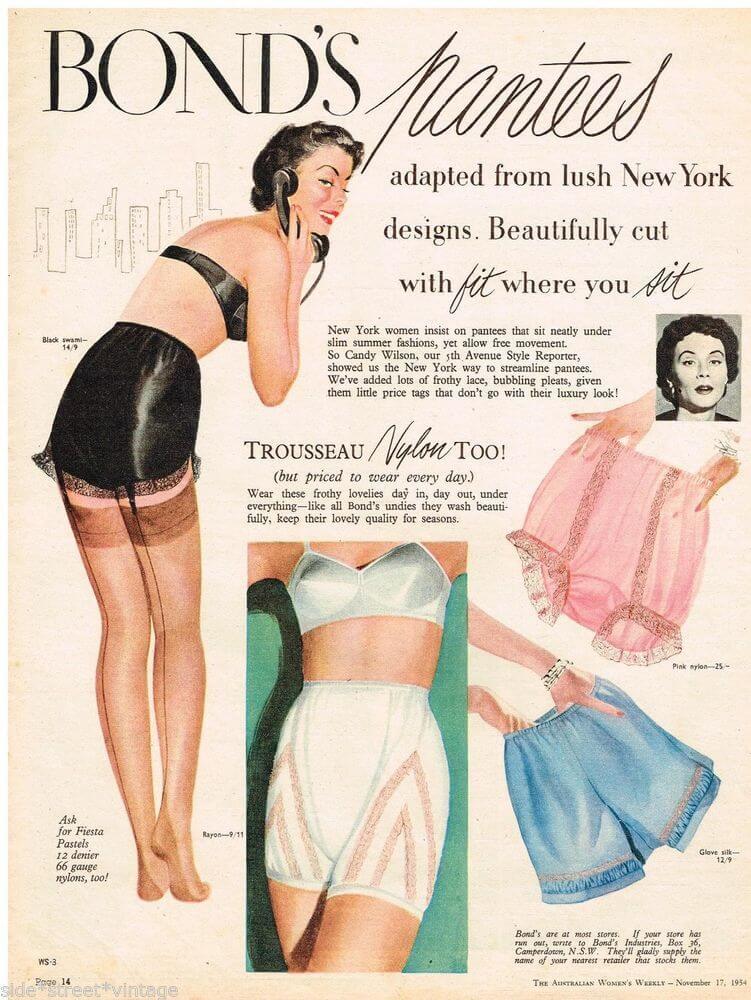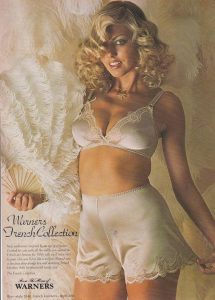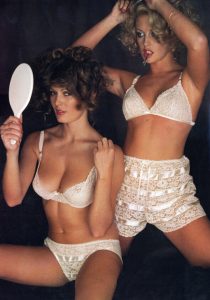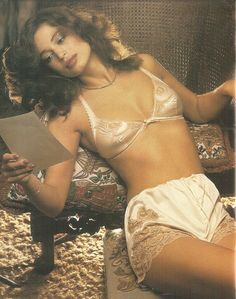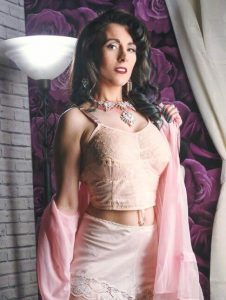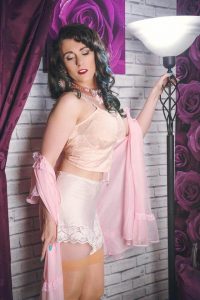Ooh, La La!
Vintage lover and Lingerie fan Susie Pritchard tells the story of your favourite piece of silky, continental sauciness!
This beautiful piece of lingerie with its silky fabric, floaty bias cut, and lace trim has become synonymous amongst vintage lovers with Mid 20th Century glamour and elegance whether worn as an undergarment, teamed up with a cami top as lounge-wear or sleep-wear, and is absolutely a staple garment for vintage pin-up photoshoots, and they sell like hotcakes from my online shop when I can get hold of them, but it’s been interesting to realise that I didn’t know how the name came about, or really how they evolved…
French Knickers! To me, this conjures up the silky pants that are high-waisted, loose-fitting and with the silhouette of shorts, often with embroidery and a pretty lace trim. Over the decades, the waistline has evolved and while I am happy to know that French Knickers are still very much a thing, they now tend to be more of a shape that sits on your hip rather than the high waists that we associate with our Mid-Century period.
As to the name, by all accounts, it seems that they’re not called French Knickers in France… there seems to be no definitive origin to the name other than at the time of their evolution, it was assumed that anything from France was a little bit saucy and exotic, and some sources throw up the idea of the name being inspired by the frilly undergarments of the risqué Can Can dancers that proliferated in the clubs and theatres of Paris, notably the Moulin Rouge, whilst others simply suggest that there was a time when anything a little sexy was assumed to have come from the continent.
So, what’s in a name? I also discovered a while ago that undies of this style are generally referred to as “Tap Pants” in the States; when I first spotted this term in a vintage Facebook group (and believe me, people in vintage Facebook groups know their stuff!) I thought it was perhaps me getting my names muddled (or my knickers in a twist, so to speak) but it turns out that Americans (like the French) don’t call them French Knickers, but use their own name derived from the little silky shorts that tap dancers wore in the 1930s for ease of movement when rehearsing routines.
I think one could be forgiven for assuming that knickers, or underpants as we know them today, have been around in a similar form since the dawn of time but not so! Up until relatively recently really, women didn’t wear covered in “pants” but rather their nether regions through the ages would have been uncovered but obscured beneath layers of voluminous petticoats, floor-length skirts, long shifts, and chemises, not to mention corsets, bustles, and hoops. “Drawers” started to develop in the early 1800s and became widespread in the era of Victorian prudishness but were still not our familiar garments, rather they were separate legs, initially ankle length and attached at the waist, probably more about keeping your legs warm as fabrics became thinner and ensuring your naughty little ankles remained out of sight than anything else. Underwear changed as fashions and fabric changed. Women started becoming more empowered and undertaking more physical activities, and knickers started to develop into the enclosed garment we know today.
By the 1920s, skirts had shortened to the knee, the body shape to aspire to was boy-like with no curves and fabric had become sheerer so lingerie styles progressed accordingly which is where our ‘French Knickers’ style comes in, alongside Camiknickers which combined the bodice and knickers into one garment. By the 1930s there was a vogue for bias-cut clothes and material cut like this tended to elongate the figure and lingerie became slinkier and more figure-hugging. This was the heyday of French Knickers and Camiknickers, made in silk or rayon and beautifully shaped, with little side button fastenings at the waist, always with the wide legs and often decorated with embroidery and lace trim. The wide shape of the legs sometimes acted as a petticoat under the shorter skirts and dresses.
During the Second World War, necessity became a big factor in how fashion evolved; material was rationed, the Utility scheme was introduced, and a pair of knickers would have cost you 3 clothing coupons. These resulted in many items being homemade and French Knickers alongside other lingerie would have been knitted, made from other discarded garments, or if you were lucky enough to snag a damaged parachute, then the “parachute silk” (actually a form of nylon) was wonderful for slips, knickers, nighties and indeed your whole honeymoon trousseau!
Hooray for nylon! This truly was the Mid-Century wonder fabric, a good example of scientific developments influencing fashion, and exploded into the 1950s in the form of full wide petticoats to go under the “New Look” style dresses (thank you to Christian Dior for introducing the flattering, feminine shape using obscenely generous amounts of fabric to twirl away the deprivation of the war years!) and also in the form of the frothiest, frilliest knickers and pants in all the colourful shades you could imagine, as opposed to the basic whites, pinks, and popular peach shades of previous decades. Whilst smaller “panties” started to become popular into the 1950s and 1960s, the French Knicker style still prevailed and I currently have an amazing collection of 1960s nylon knickers from iconic lingerie label “Vanity Fair” in the traditional wide-legged “shorts” style, in eye-popping bright citrus shades. Of course, we all know that hemlines shot up even further in the ‘60s, so briefs it was!
The traditional silhouette of long-line bras with French Knickers really does conjure up a 1940s ideal of glamour and sexuality with an over-riding elegance, and there are many “pin-up” images of models and starlets of the day posing in this kind of lingerie, a look that modern-day vintage style pin-up girls also aspire to. The French Knicker shape may have tailed off into the ‘50s and ‘60s, but in the 1970s there came a fabulous resurgence of the romantic lace and frills of bygone eras with designers such as Janet Reger introducing a new generation of women to the feminine joys of French Knickers and Camisoles, and our Camiknickers evolved into Teddies. To me, the 1980s became the second heyday of this style of lingerie with glamour models like Samantha Fox bringing our traditional French Knickers into a whole new world of cheeky sexuality, always with a hint of silky, lacy romance and opulence.
Today, these lovely longer length knickers are perfect for vintage photoshoots and fashion events, and for me, there’s nothing nicer to wear under full skirts and dresses, especially for dancing (or in case of a Marilyn moment on a breezy day!) when “big pants” are pretty essential and a nice pair of French Knickers is preferable to the Bridget Jones type! A hint of pretty silk and lace is both modest and stylish.
A life-long collector of all things old and glamorous, Susie started her own vintage clothing business Wake Up Little Susie in 2010. As a fan of a floaty nightie or a cute pair of PJs, Susie specialises in vintage nightwear and lingerie from all eras which she showcases at her own fashion shows, Pop-Up Boutiques and in themed photoshoots. Check out Susie’s Etsy shop for an ever-changing selection of vintage pretties, and follow her on Social Media for news of upcoming Pop-Ups and collaborations!


